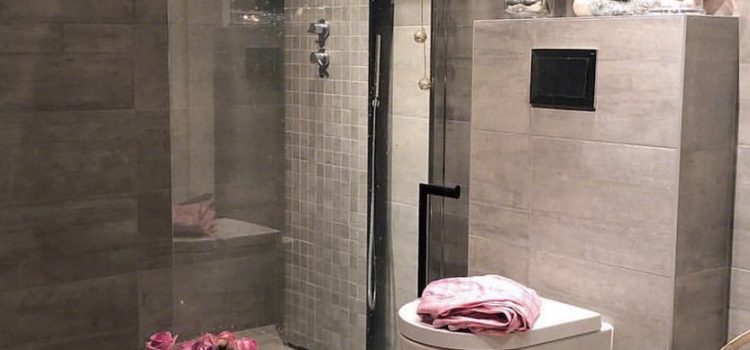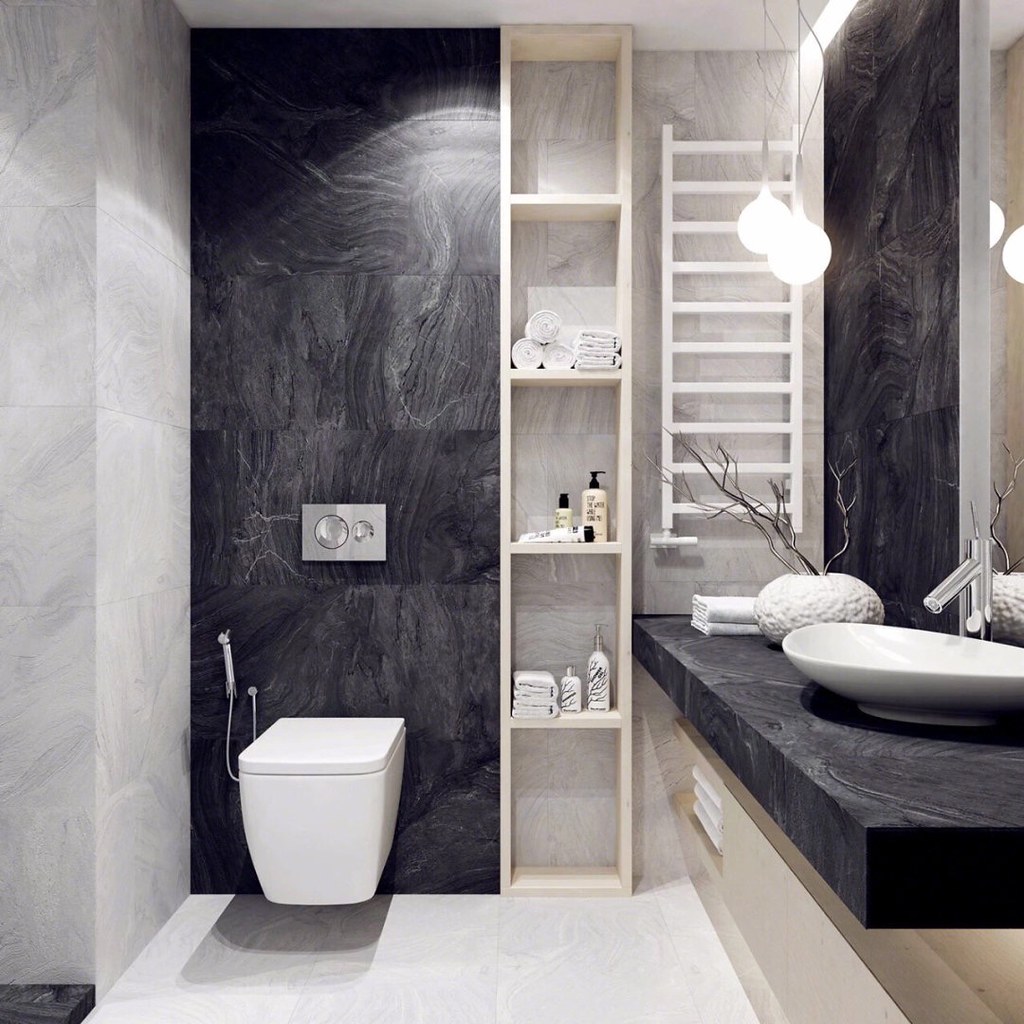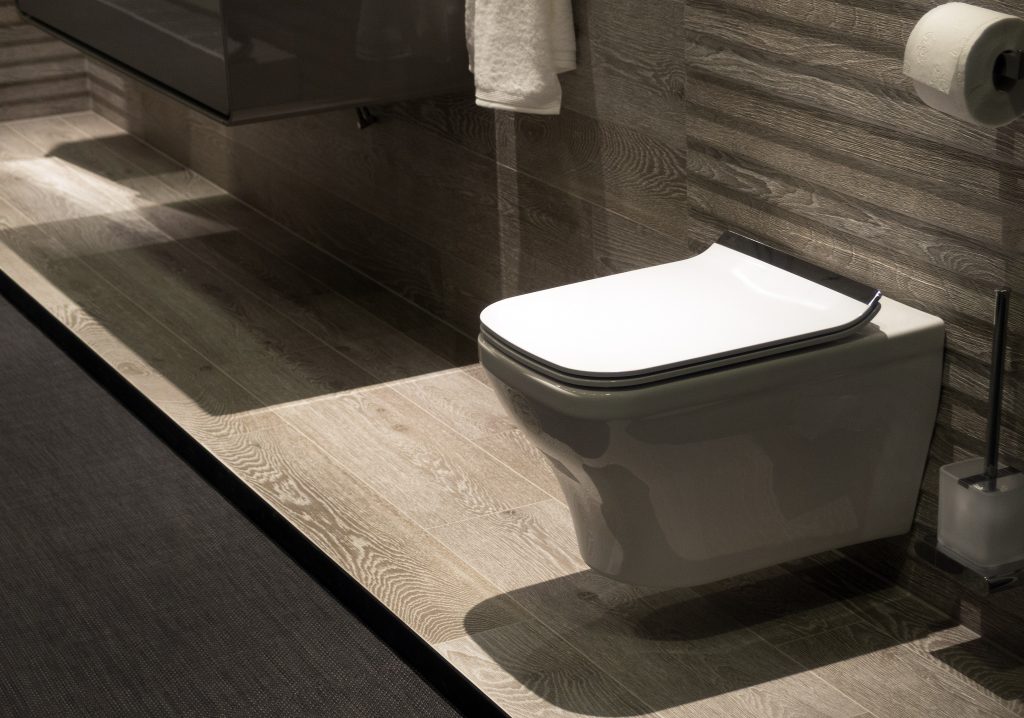
How to Choose a Flangeless WC
Contents
– Technology of flush toilets
– Advantages of flangeless toilets
– Choosing the right flush toilet seat
– Price and guarantee of flangeless toilets
Whether floor-standing or wall-hung, traditional toilets have a flange on the bowl, i.e., an inner peripheral rim that hides the area through which the flushing water is propelled. Flangeless bathrooms, on the other hand, have no flange.
Good to know: wall-hung toilets do not have floor support but are attached to a support frame built into the wall.
Flangeless toilet technique
In flangeless toilets, a small ceramic lip replaces the flange and directs the flush water towards the front and sides of the bowl.
Within this small lip, sometimes called the “flush pipe”, side and center holes channel the water to the front and sides. On the sides, the distribution of this water is ensured by a slight peripheral relief, more or less pronounced according to the models, which guides it all around the bowl. There is, therefore, no risk of splashing.
Note: the water of a flush toilet must be propelled with sufficient pressure inside the bowl to eliminate the waste.
Advantages of wall-hung WC washdown

Flangeless toilets have many advantages over traditional bathrooms:
– They are exceptionally stylish with their enlarged bowl opening and low interior relief;
– They are much more hygienic. The flange is indeed a nest for bacteria and germs, which, in traditional toilets, are trapped under this inner rim where they proliferate and embed themselves in the unglazed ceramic. It is estimated that about 20% of the bowl is not rinsed;
– Maintenance is easy. A simple wipe-down is all that is needed. In some models of flangeless toilets, the flush collector is also removable to simplify and optimize cleaning even more;
– They are water-efficient since they need less volume to evacuate the materials. They are generally associated with a dual flush system that consumes little water (2 to 4 liters for the most economical);
– They also save on cleaning products.
How to choose the flush toilet seat

If flush toilets are particularly hygienic, their seat must be as well. It is therefore recommended to choose a non-porous material:
– polypropylene, or thermoplastic, is a synthetic resin that is easy to maintain and inexpensive;
– thermosetting resin is a synthetic resin to which a hardener has been added to provide high resistance;
– Compressed wood, solid wood, and reticulated wood combine a rustic look with great strength;
– the most premium is polyester, which can be translucent or include decorative patterns, and combines strength and comfort.
An anti-bacterial system can be incorporated into the material.
Note: In terms of options, drop brakes prevent the seat from slamming into the bowl. On the other hand, if the flap can be unclipped, it allows a complete cleaning.
Price and warranty for flangeless toilets
Flangeless toilets are available at home improvement stores and specialty stores. The price of a flangeless bathroom ranges from $120 for a single bowl to more than $600 for a complete flangeless toilet pack. The warranty is usually between 2 and 5 years.
Read more:
- The 4 Cold Zones in a Refrigerator – What Are They Exactly?
- Factors to Consider Before Buying a Bar Fridge
- How to Change an Oven Gasket
- Pipes and Wrenches | 4 Easy Steps to Dismantle a Faucet
- How to Choose the Proper Bathroom Faucets
- Pipes and Wrenches | Installing a Shower Tray
- Pipes and Wrenches | Unclogging a Drain
- 6 Easy Steps to Descale a Faucet Aerator
- Pipes and Wrenches | Installing a Rainwater Harvesting System
- 6 Easy Steps to Repair a Leaking Faucet
How did you find this post? Hope it helps you choose your flangeless WC. Please, remember to share your views below.

